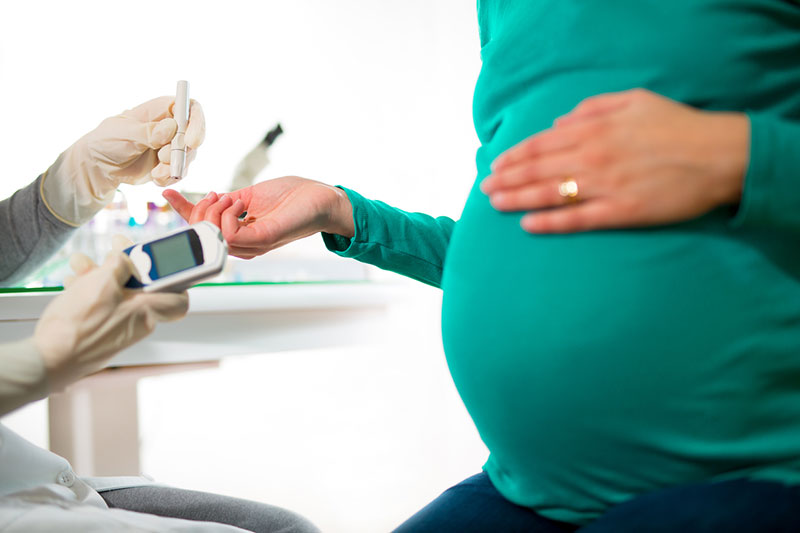
A new method to detect genetic material from the placenta in the blood of pregnant women could potentially identify the risk for gestational, or pregnancy-related, diabetes in the first trimester, suggests a small study funded by the National Institutes of Health. Typically, gestational diabetes is not diagnosed until late in the second trimester or in the third trimester. The method could be used to identify patients who would benefit from preventive treatments before diabetes develops.
The new method isolates extracellular vesicles (EVs) secreted by the placenta into the blood. EVs are membrane-bound sacs containing micro-RNAs, the molecular scaffolding upon which proteins are assembled. Micro-RNAs from EVs of women who later develop gestational diabetes differ from those of other pregnant women and from non-pregnant women.
The study was conducted by Sherin U. Devaskar, M.D., and colleagues at the David Geffen School of Medicine at the University of California, Los Angeles. It appears in PLOS ONE.
Background
Gestational diabetes refers to high blood sugar (glucose) during pregnancy. The condition can be treated, but it is associated with higher risk of maternal high blood pressure and increased body fat for newborns. The larger fetal size often seen in gestational diabetes may result in problems with labor, including a higher risk of cesarean delivery. Later in life, children born to women who had gestational diabetes are at higher risk for obesity. Gestational diabetes also increases maternal risk for later life obesity, type 2 diabetes, and cardiovascular diseases. A method to identify those at risk for gestational diabetes in the first trimester could allow physicians to provide early interventions to reduce the severity of the condition or prevent it from occurring.
EVs containing micro-RNAs and other genetic material are released by cells, including the cells of the placenta. Beginning at six weeks of pregnancy, the placenta begins releasing EVs into the maternal circulation. The amount of EVs increases throughout pregnancy, reaches a peak in the third trimester, and declines after delivery.
For the current study, researchers compared the micro-RNAs of EVs from three healthy non-pregnant women, seven women with healthy pregnancies, and 14 with gestational diabetes.
Results
EVs from the blood of pregnant participants had 296 micro-RNAs that were not present in the circulation of non-pregnant participants. Of the 296 micro-RNAs, 269 were more abundant among participants later diagnosed with gestational diabetes. For the second trimester, 130 micro-RNAs were present only among those diagnosed with gestational diabetes, and 45 found only among those who did not develop the condition. For the third trimester, 112 micro-RNAs were found only among participants with gestational diabetes and 28 only among those without gestational diabetes. At delivery, women with gestational diabetes and without the condition had 19 micro-RNAs, 10 of which were more prevalent among those with gestational diabetes. Another micro-RNA was found only in participants without gestational diabetes.
Significance
The authors concluded that analyzing EVs for the micro-RNAs they contain has the potential for identifying gestational diabetes early in pregnancy.
“This study provides more evidence that gestational diabetes is a condition that begins developing far earlier than when currently clinically diagnosed,” Dr. Devaskar said. “We are excited about this step toward the potential of more reliable and earlier diagnosis so that we may intervene before the development of adverse conditions for mother and baby that are often lifelong.”
Reference
Thamotharan, S et al. Circulating extracellular vesicles exhibit a differential miRNA profile in gestational diabetes mellitus pregnancies. PLOS ONE. 2022. https://doi.org/10.1371/journal.pone.0267564

 BACK TO TOP
BACK TO TOP